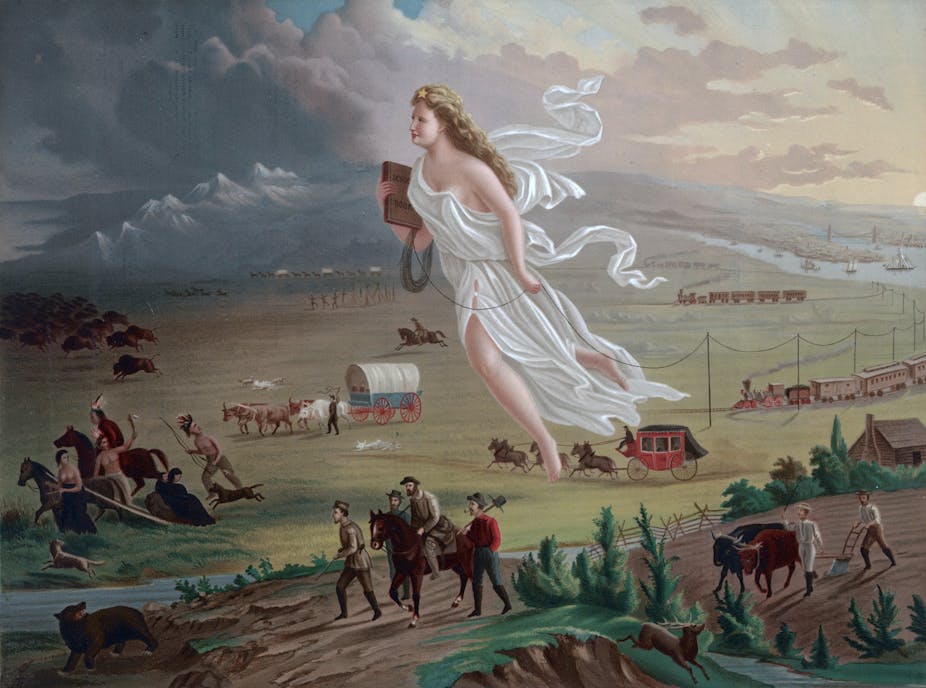The US Army recently issued an official announcement that it will not approve the proposed route of the Dakota Access Pipeline, a highly controversial project that would transport crude oil through indigenous people’s sacred lands and potentially contaminate their water supply. The army now says an easement (essentially a permit) for the pipeline’s construction will not be made until “further investigations” are completed.
Two of the companies involved, Energy Transfer Partners and Sunoco Logistics, released a statement branding the decision a “purely political action” but this is still a significant win for the Standing Rock Sioux tribe who live in the area. Yet as Indigenous Environmental Network campaign organiser Dallas Goldtooth noted in a video posted to Facebook after the army’s announcement, this is not the end of the pipeline saga.
The ultimate decision may now simply be deferred to the incoming Trump administration; Trump himself publicly supports the pipeline, and until recently held stock in firms involved in its development.
Nonetheless, even if the fight isn’t over yet, the army’s statement may prove to be a pivotal moment in the history of indigenous-Euramerican relations. (For simplicity’s sake, I’ll use the phrase “indigenous peoples” to refer to those peoples of American Indian or Native Alaskan descent living in the US, and “Euramerican” to refer to both white American peoples of European descent and Europeans who live in the US.)
To truly appreciate the weight of this victory, it is worth illustrating a key concept in the history of the US’s dealings with its indigenous peoples. For hundreds of years now, it has repeatedly and almost without exception sacrificed their rights in the name of progress. This is underpinned by an especially pernicious ideology: “manifest destiny”.
Marching west
While the origins of the phrase are disputed, the idea behind manifest destiny is relatively simple: white Americans have the God-given right and duty to spread their values and way of life across the continent and beyond. As historian Reginald Horsman noted, this phrase was merely the articulation of an ideology that had long driven the actions of European colonisers.
In the first year of his presidency, Andrew Jackson embedded this ideology into US government policy in the form of the Indian Removal Act (1830), officially endorsing the view that indigenous peoples and civilisation where incompatible:
[The act] will place a dense and civilised population in large tracts of country now occupied by a few savage hunters … [i]t will separate the Indians from immediate contact with settlements of whites … retard the progress of decay … and perhaps cause them gradually, under the protection of the government … to cast off their savage habits, and become an interesting, civilised, and Christian community.
Although there was considerable resistance to this legislation, the Indian Removal Act artificially flattened the multiplicities of indigenous identities into one generic “Indian” stereotype, and normalised the idea that the defining characteristics of an “Indian” were anti-progress, anti-technology, and anti-civilisation.
A striking illustration of this is found in the photography of Edward Curtis, who at the turn of the 20th century was paid US$75,000 by financier JP Morgan to capture tens of thousands of images and wax cylinder recordings of Native American peoples and languages. His stated aim was to preserve “the mode of life of one of the great races of mankind” before “the opportunity will be lost”.
Curtis’s works are widely remembered to this day, but what’s less well-known is that he used an early form of “photoshopping” to erase any signs of modernity or technology from his photographs. Perhaps the most famous example is his decision to remove an alarm clock from a picture titled In a Piegan Lodge.

With few exceptions, throughout the 19th and much of the 20th century the US government treated indigenous peoples as obstacles to progress. This agenda was advanced by assorted policies, from the Dawes Act (1887), which almost halved indigenous landholdings, to the introduction of boarding schools that punished indigenous children for speaking their language, to the termination policies of the 1950s and 60s, which sought to destroy tribal sovereignty and assimilate indigenous people into “mainstream” US culture.
Although resistance to these policies was and remains both significant and successful, recent research reveals that the idea still persists at the core of many US schools’ history curriculums, which exclude the historical and contemporary contributions of indigenous peoples (as well as other non-white Americans). As this history teaches it, Euramericans more or less own the US’s past.
Onward
Although follow-up investigations to the pipeline decision may rest on an environmental impact statement, the decision does more than protect the rights of indigenous peoples to a safe water supply. It also helps along the slow process of redressing the historical imbalance against indigenous peoples, who still face political and cultural oppression while their rights are sacrificed to a very particular type of “progress”.
This isn’t lost on those most involved in trying to stop the pipeline. In a statement released on December 4, Standing Rock Sioux tribal chairman Dave Archambault II wrote:
Treaties are paramount law and must be respected, and we welcome dialogue on how to continue to honour that moving forward. We are not opposed to energy independence, economic development, or national security concerns but we must ensure that these decisions are made with the considerations of our indigenous peoples.
There is a long way to go – but the bravery and endurance of thousands of protestors at Standing Rock is a significant shift to the meaning of progress.

